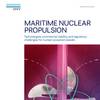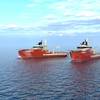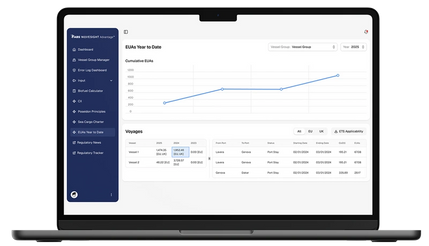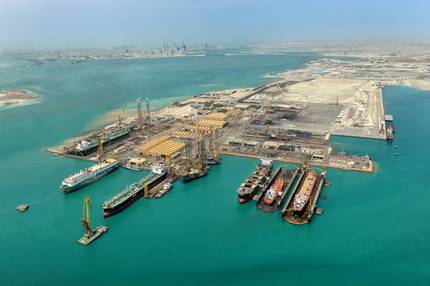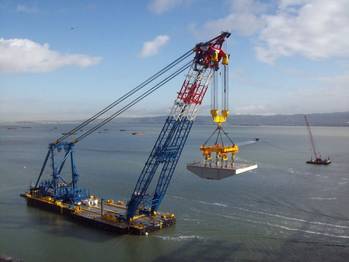A Step Forward for Direct Air Capture
Like new fuels and onboard carbon capture, direct air capture (DAC) needs to be scaled up to become an effective decarbonization pathway.
This week, German shipowner NSB Group demonstrated its willingness to step forward by entering into a partnership with Phlair, a German direct air capture company.
The CO2 removal credits will be produced by capturing CO2 from the atmosphere at Phlair’s direct air capture facility “Dawn” and permanently storing it underground. NSB will cover its Scope 1 emissions by using alternative zero-emission technology and use DAC to address its Scope 3 emissions.
In September, NYK purchased carbon removal credits that will be produced from STRATOS, 1PointFive’s first DAC facility in Texas which is on track to start-up this year.
It’s not just shipping companies making the move. Another DAC company, Climeworks, announced in September that Schneider Electric had signed an agreement for carbon removal credits through to 2039. In July, Climeworks secured $162 million in equity funding, taking the company’s total funding since inception to over $1 billion.
DAC systems extract CO2 directly from the atmosphere to be either stored or used to produce carbon-based products. Extraction modules can be built anywhere to remove CO2 from the ambient air – unlike other capture technologies that are designed to be close to the source of emissions.
That is both a benefit and a challenge, as CO2 makes up only 0.04% of the air by volume, so to produce one cubic meter of CO2 requires at least 2,500 cubic meters of air. DAC systems also require energy for the process as well as for compressing the CO2 for transport.
And a blog in Clean Energy Wire points out just how scalable DAC might need to become: “A team from the private research institute Rhodium Group has calculated how direct air capture could contribute to achieving net zero emissions by 2045 in the US. In two scenarios, a weaker use of DAC (annual removal capacity of around 0.6 billion tonnes) and a stronger use (1.8 billion tonnes of CO2 removal per year) were calculated. To make this possible, almost 700 or more than 2,200 large-scale DAC plants with an annual capacity of one million tonnes of CO2 removal would have to be built. To put this task into context, the publication cites a comparative figure: there are currently 613 power plants or industrial facilities in the US, each of which emits at least one million tonnes of CO2 per year or more.”
The World Resources Institute voices other concerns: “Carbon removal credit technologies, including DAC, are still in development, with few examples of large-scale deployment to date. The pace at which they will scale up remains highly uncertain.” There are also concerns that DAC could be used to prolong fossil fuel production.
Still, research is underway to make DAC a viable, scalable process.
“Imagine if we could pull billions of tonnes of CO2 directly from the air and transform it into sustainable fuels that power the world and slow climate change,” says Dr Sam Wenger, University of Sydney alumnus and Founder of Dac Labs. “This isn’t science fiction, it’s what we’re building right now.
“What’s unique about our approach,” he says, “is it’s not energy intensive. Right now, capturing CO2 uses huge amounts of energy, making it expensive, slow, and not scalable.”
So, there may be greater potential on the horizon for willing shipowners. For Tim Ponath, CEO of NSB: “Direct air capture and storage is one of the most scientific and reliable approaches to carbon removal. This ensures that our commitments result in measurable impact. We decided to partner with Phlair because we want to do more than most of the current options can cope with today. Our goal is simple: what we emit in a given year, we want to capture in the same year. We aim for a measurable and direct effect. That’s why we are starting now in the fast-developing decarbonization technology.”
According to NYK: “Maximizing energy efficiency and transitioning to next-generation fuels remain our top priorities for reducing greenhouse gas emissions. Despite these continuing efforts, some residual emissions in the shipping industry cannot be avoided. In this context, reliable carbon removal credits generated by DAC offer an effective means to offset these residual emissions and support our net-zero goal.”
NYK says the international shipping industry emits roughly one billion tons of CO2 annually, and if about 10% remains as residual emissions after operational emission reductions, then the industry would need to remove 100 million tons via carbon removal credits each year to address them.






